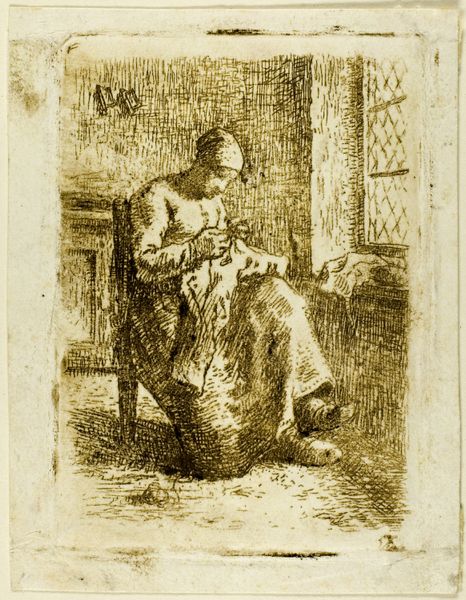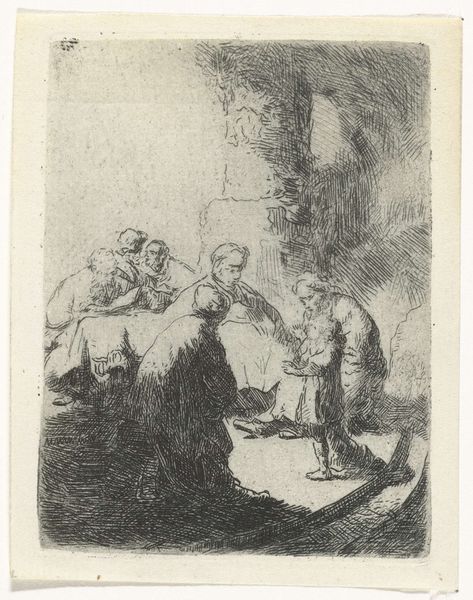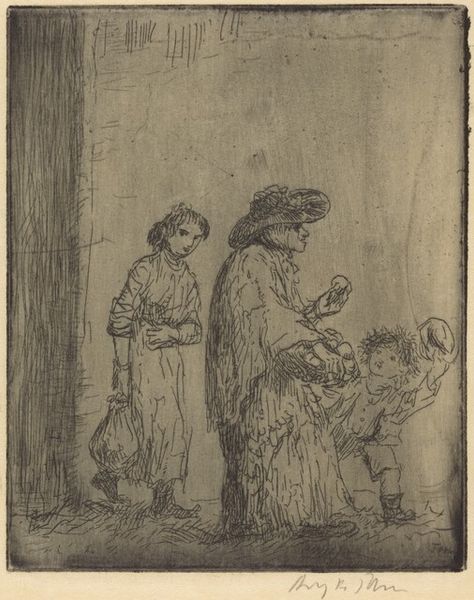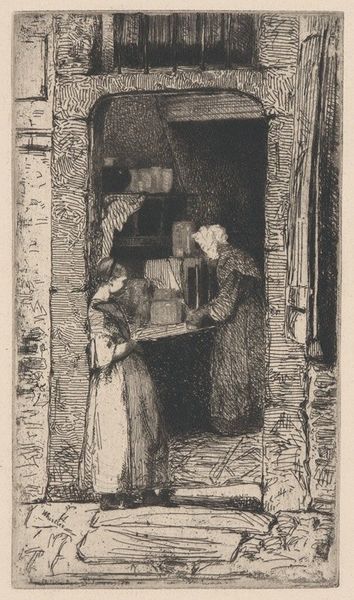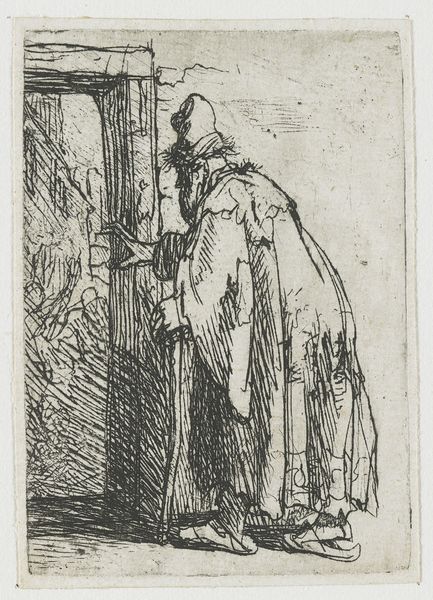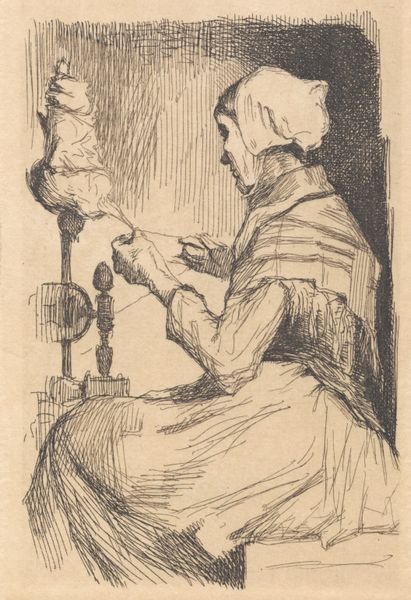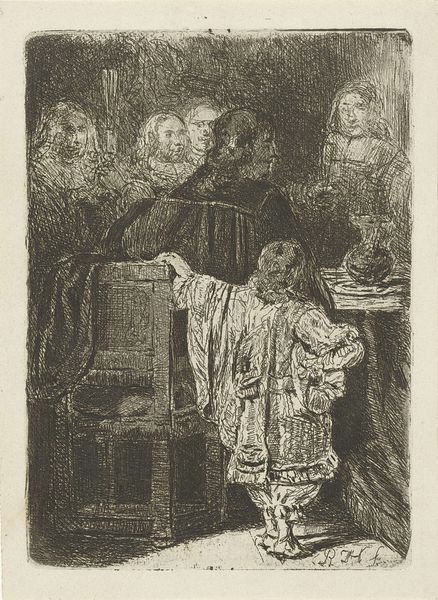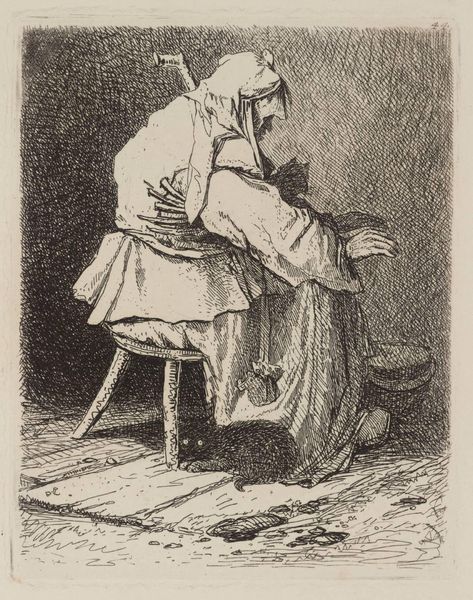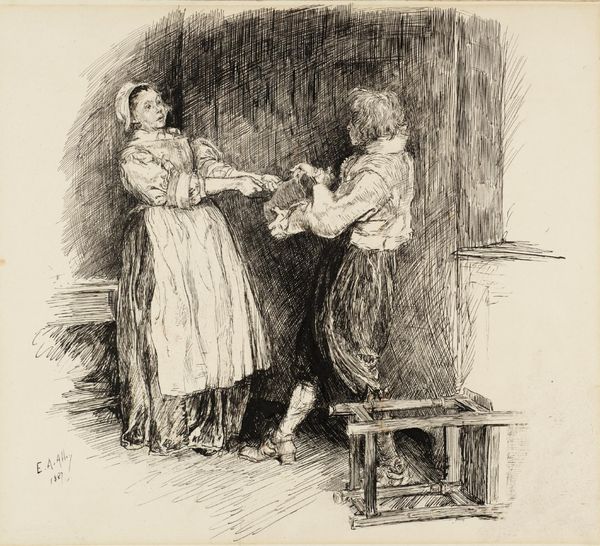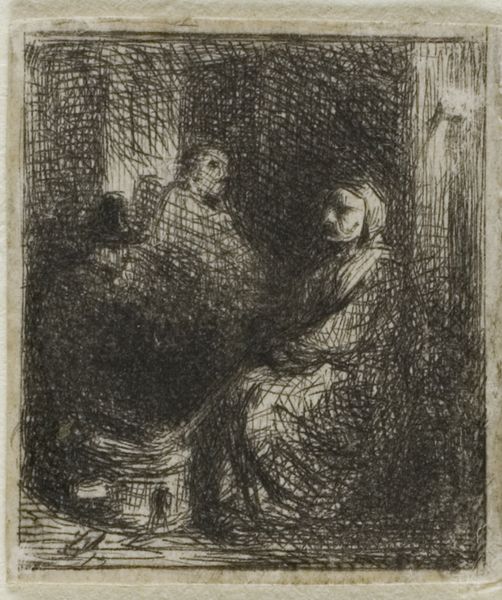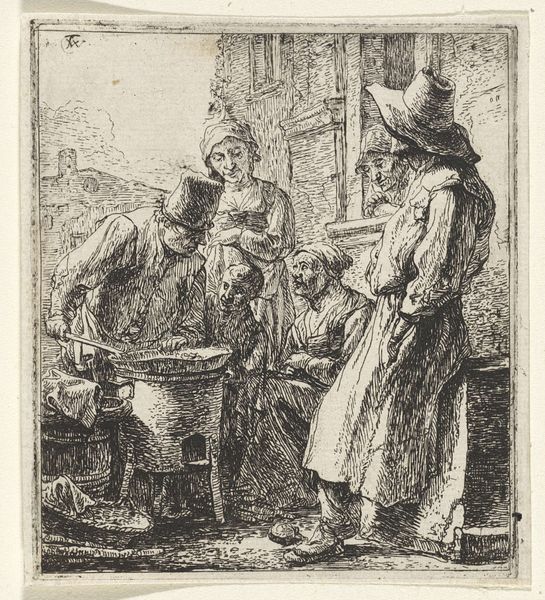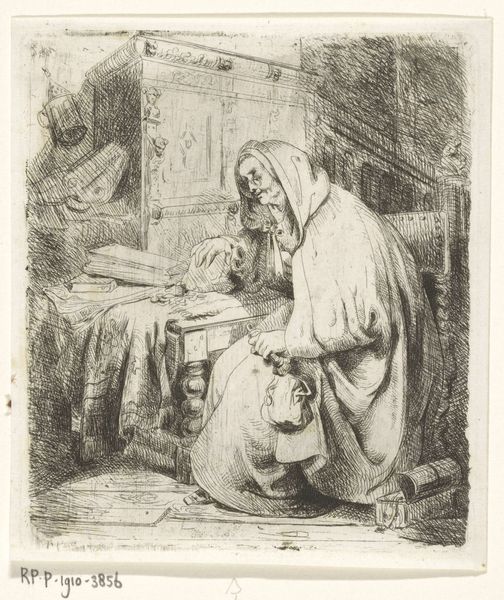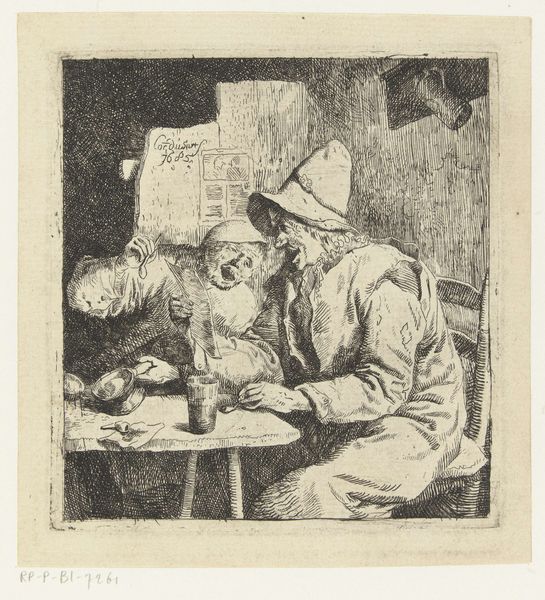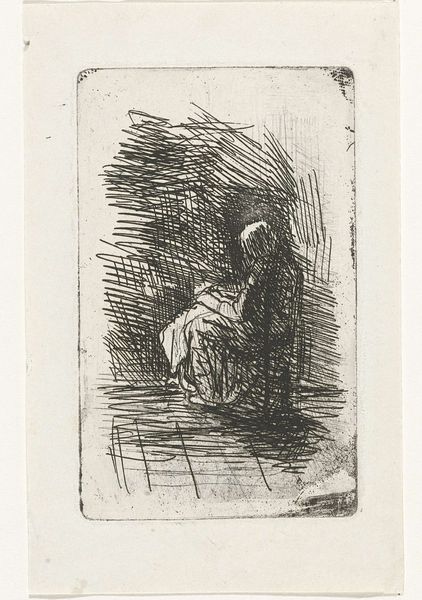
drawing, print, etching, ink
#
drawing
# print
#
etching
#
figuration
#
ink
#
genre-painting
#
realism
Dimensions: height 203 mm, width 103 mm
Copyright: Rijks Museum: Open Domain
Editor: This is Willem Cornelis van Dijk's "De gebroken pot," or "The Broken Pot," from 1856. It's an etching, a drawing with ink, and also a print, all at once. The little girl looks like she's in trouble and is the only light area on the page. How do you interpret this work? Curator: The broken pot speaks volumes, doesn't it? It's not just about the mishap; it’s a potent symbol. Brokenness, across cultures, often represents loss – innocence, perhaps, or even a disruption of the natural order. It also suggests vulnerability, as seen with the girl. Is it simply punishment, or is there perhaps a ritualistic aspect to such discipline? Editor: Ritualistic? How so? Curator: Well, think about it. We have her humble garments suggesting repentance, a specific, repetitive transgression. Consider also the shadows behind her. This composition bears resemblance to religious iconography where darkness conceals moral peril. Doesn’t her downcast gaze resemble contrition? Editor: I guess it could be like that. But wouldn’t she be in a church, then? Curator: Perhaps. Or perhaps this very scene—a domestic setting transformed by loss— becomes a personal, internal chapel. Think of how often the everyday becomes sacred. The Dutch Golden Age, after all, excelled at finding profound meaning in domestic scenes. This echoes in Van Dijk's composition. Does she repent the act, or simply fears the outcome? Editor: So, the broken pot… it's about more than just a mistake. It’s a break of expectation! A reminder of cultural values and their persistence in our memory, presented so candidly in this image. Curator: Precisely! The endurance of symbolism—transcending the centuries and continuously shaping narratives in art and life.
Comments
No comments
Be the first to comment and join the conversation on the ultimate creative platform.
